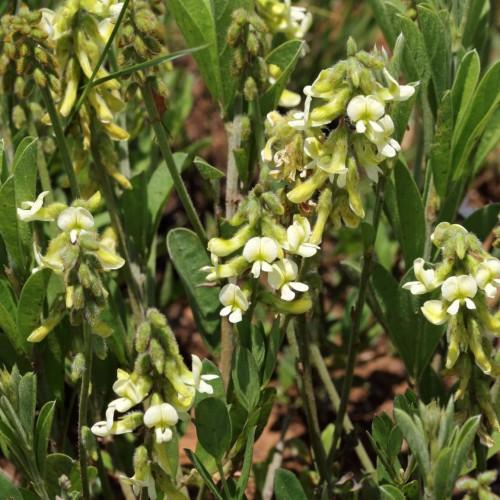
Hillside Milkvetch
Astragalus collinus
Also Known As - Rattle MikvetchWatering:
Frequent
Hardiness Zone:
Sun:
full sun,part shade
Fruits:
Fruits Ready In Fall
Leaf:
Yes
Growth Rate:
Low
Salt Tolerant:
Yes
Care Level:
Medium
watering
Canada Milk-Vetch should be watered regularly during its growing season from the beginning of spring to mid-summer. This plant species requires medium to low levels of water and prefers moist but well draining soil. Generally, it requires around 1 inch of water per week. It's best to avoid over-watering, which can lead to root rot. During periods of intense heat, it may require more frequent waterings in order to lessen the risk of wilting.
sunlight
Canada Milk-Vetch (Astragalus canadensis var. canadensis) plants grow best when exposed to full sun. This plant species should receive at least 6 to 8 hours of direct sunlight every day. It generally prefers to be exposed to morning sun and evening shade. If provided with too much direct sunlight it may sunburn or become stressed, so moderation is key. This species typically grows best in the summer months, when the longest days provide the most direct sunlight. In the winter months, Canada Milk-Vetch may need additional artificial light or supplemental sunlight provided by a greenhouse heat lamp to reach the optimal amount of direct sunlight.
pruning
Canada Milk-Vetch should be pruned in early spring (March or April). During this time, the plant should be cut back to about 8-10 inches (approx. 20-25cm) from the ground. This plant should also be lightly pruned throughout the growing season to promote growth. Dead or diseased stems should be removed. Overall, it is recommended that Canada Milk-Vetch should not be over-pruned and the pruning should take place in small bits at a time (e.g. a few branches at a time).
